Interview with Patrick Hall
0May 24, 2018 by Ville Raivio
VR: Your age and occupation?
Products from Pukimo Raivio
Ralph Lauren, Black Label suit, size 52EU
PH: I am 35 years old, and an Episcopal/Anglican priest. I currently work as the Episcopal chaplain to Rice University in Houston, Texas, in the United States.
VR: Your educational background?
PH: I took a bachelor’s degree in history and philosophy from the University of Texas, and a Master of Divinity from the Virginia Theological Seminary.
VR: Have you any children or spouse (and how do they relate to your tailoring enthusiasm)?
PH: I have no children but have been married for two years to a wonderful woman who is something of an aesthete herself. She is almost as invested in my wardrobe as I am. She has endearing attachments to some of my clothes, and always mourns when the seasons change and seasonal pieces go into “hibernation.” We are mutually invested in each other’s delight with clothes. She also wears a fair bit of vintage clothing, and we are each other’s first opinion whenever we are thinking about buying things. I am really grateful for a spouse who is neither threatened by nor annoyed by my eccentric love of tailored clothes. My wife has a keen sense of taste that compliments and informs my own. I know that not everyone is so lucky.
VR: …and your parent’s and siblings’ reactions to style back in the days when you began?
PH: I am an only child, so I have never had to contend with the opinions of siblings. My parents are befuddled by aesthetics, and my love for the tailored wardrobe in particular. They epitomize the sentiments of many Americans who came of age in the 1960s. They regard tailored clothes with a vague disdain because the tailored wardrobe represents a political/economical/cultural milieu that the “baby-boom” generation rejected in favor of what G. Bruce Boyer calls “prole gear.” My father dutifully wore the American uniform of worsted suit/button-down shirt/repp tie to work for most of his career but seems never to have taken any joy in it whatsoever.
VR: What other hobbies or passions do you have besides apparel?
PH: I am also passionate about historic preservation. My hometown of Houston, where I still reside, is ritually sacrificed to the god of the wrecking ball every ten years. I believe history should obligate and constrain us, that we are made wiser when we are forced to grapple with edifices from the past, rather than always choosing the easy out of designing for an empty lot. I am part of a community of people here in Houston who give voice to the memory and taste of dead men, though our activism is often futile.
VR: How did you first become interested in clothing, and when did you turn your eyes towards the tailored look?
PH: I have two early memories of tailored clothes – wearing a morning suit as an attendant in a family wedding at a very young age, and dressing for church each week in a blazer and flannels. I was immediately enamored with the dignifying properties of tailored clothes and have unrepentantly preferred them as long as I can remember.
VR: How have you gathered your knowledge of clothing — from books, in-house training, workshops or somewhere else?
PH: This is a really important question, because most men suffer the results of the aforementioned mid-20th century rupture, where the knowledge of how to deploy the language of classic menswear was not inter-generationally communicated. My father could not explain the casual utility of patch pockets or demonstrate how a button-down collar was supposed to roll, or what kind of shoes to wear when. Furthermore, it is nearly impossible now to find salespeople or tailors in the United States who are trustworthy guides in classic menswear, unless you live in New York. So, like many of my peers, I have filled up what knowledge was lacking through the internet and books. Like many Americans, I am particularly indebted to Alan Flusser and G. Bruce Boyer, and vintage enthusiasts like Marc Chevalier, whose collective work has kept alive an American perspective on classic menswear that was in danger of being entirely lost on account of widespread neglect.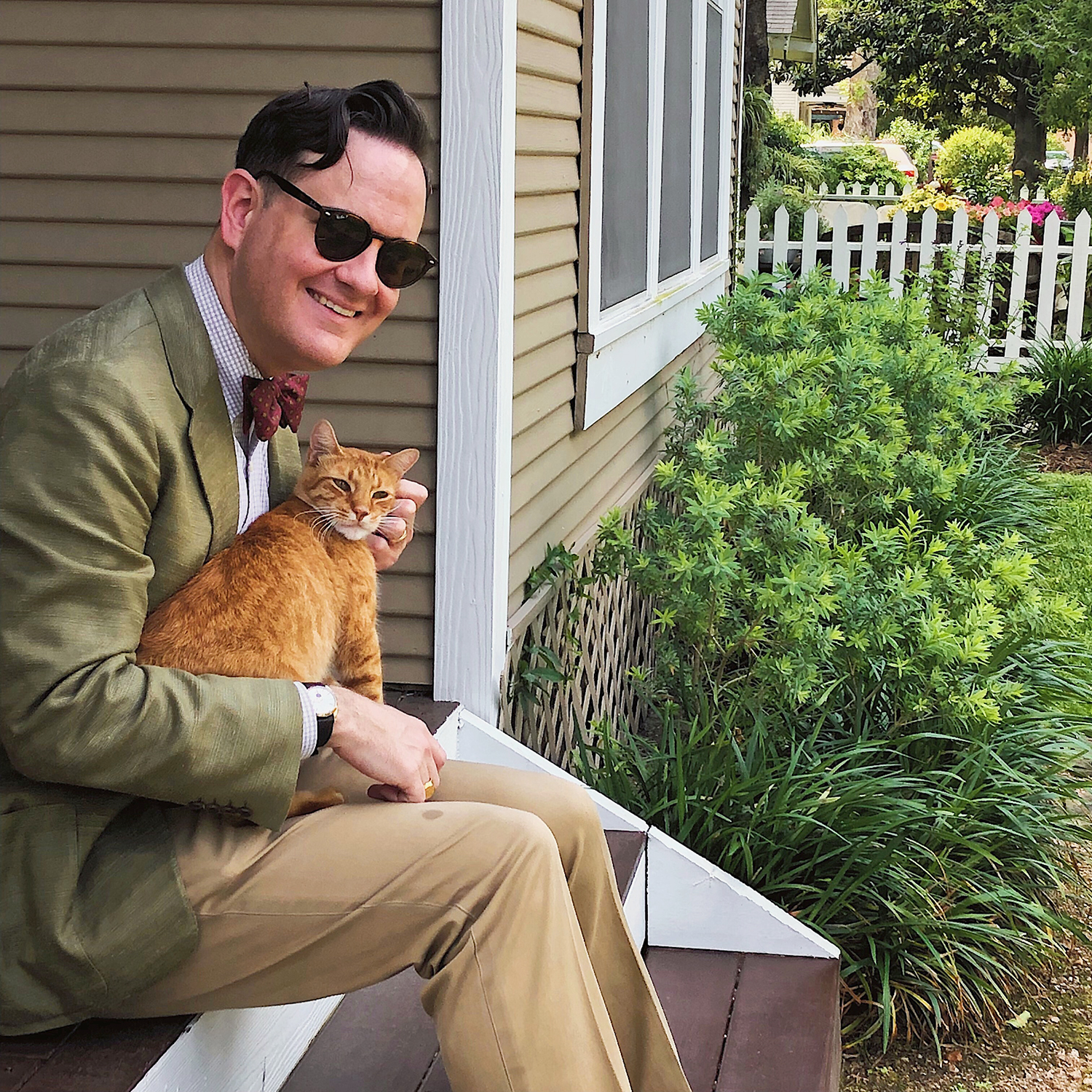
VR: How would you describe your own dress?
PH: I wear a personal uniform, in that my embrace of classic menswear is total. I have built my wardrobe to be entirely interchangeable, and I wear all my clothes in rotation, with the exception of ties and pocket squares and socks which are chosen intentionally to harmonize all the other randomly sequenced pieces. I like to juxtapose colors and patterns. My hope is that my compositions toe the line between good taste and dandyish narcissism. I also mix vintage and modern pieces, as a way of critiquing the disposability of modern fashion. My hope is that my compositions also toe the line between good taste and period costume.
VR: Who or what inspires you?
PH: Old photographs offer a great deal of inspiration for me. I try to learn from the effortless way tailored clothing was worn by anonymous men before the ascendency of prole-gear made the entire language of classic menswear antique. I love the anonymous snapshots of men in tailored clothes that overflow baskets and bowls at antique shops. They are my teachers. I am also inspired by the taste of public figures both past and present who speak the language of classic menswear proficiently – Prince Charles, Gregory Peck, Tom Wolfe, Robert Lowell, Anthony Eden, Julian Bond, T.S. Eliot, George H. W. Bush, Anthony Joseph Drexel Biddle, Jr., and so on.
VR: What’s your definition of style?
PH: As it relates to the wardrobe, style is an eye for clothes which suit one’s body and communicate an idiosyncratic sense of taste. Because style must be self-aware, it is always unique and particular. People with a sense of style may opt into fashion trends that suit their proportions and taste, but are not buffeted about by the endless, tacky churn of fashion brands. In this sense, style has a permanency to it.
VR: I see that you have a passion for vintage garments. Why take this extra mile when the shops are full of everything?
PH: Ah, would that the shops WERE full of everything. Economies of scale have not been kind to the tailored wardrobe. As a result, going vintage is one of the easiest ways to get garments of exceptional quality and faultless fit with unique detailing for less than the cost of bespoke. Furthermore, pre-1960 cloth is simultaneously more robust and more breathable than today’s, being heavier than modern cloth but less densely woven. This resulted in garments that endured more shaping by the iron, and tailors were able to offer their customers clothes with incredible shape – swelled chests and nipped waists that could be cut close at the button point without buckling under the tension like modern fabrics do. There were also a myriad of patterns and colors that are just not available today, because demand for tailored clothes is so much diminished. I have handled swatches of worsted wools from the 1920s with a depth and surface interest that dwarfs anything put out by today’s mills. Also, because a man might have two suits that saw daily wear for almost every circumstance, vintage clothes were designed to live and move in – invariably, my vintage pieces are the most wearable in my wardrobe. Finally, we all need to be thinking about sustainability in our lives. Wearing vintage clothes is an easy way to signal that we are reducing our reliance on disposable products that deplete natural resources during production and end up in landfills after just a few months or years of wear. Our cultural obsession with “newness” is a relatively recent fad and is doing our world no favors.
VR: Finally, given your ecclesiastic background, what do you feel we should know about dress in Christianity?
PH: This is a difficult question to answer, as Christians represent an unfathomable diversity of perspective, and are often appallingly bad at doing justice to our faith. But I believe that the Christian Gospel is a dignifying message, a story that makes human lives and human community more beautiful and more meaningful. Tailored clothes have a similar aim – every man will need something particular and unique from his wardrobe, depending on the specific idiosyncrasies of his physique. Tailored clothes broaden, they slim, they lengthen, they shorten, they draw attention to the face. In short, tailored clothes are designed to uniquely dignify each man who wears them. The tailored wardrobe is the raiment of western civility, and it disposes its wearers to their neighbors. Tailored clothes harmonize best with judicious kindness and respectful comportment. Christians have, at their best, always worked for just such a community, where every person is dignified through their relations with every other, and judicious kindness and principled respect are the celebrated. I wear tailored clothes to signal my respect for the public square and for the other people who I find there. It is my Christian faith that has fostered such respect in me.
Category American style, Men of style, Vintage | Tags:

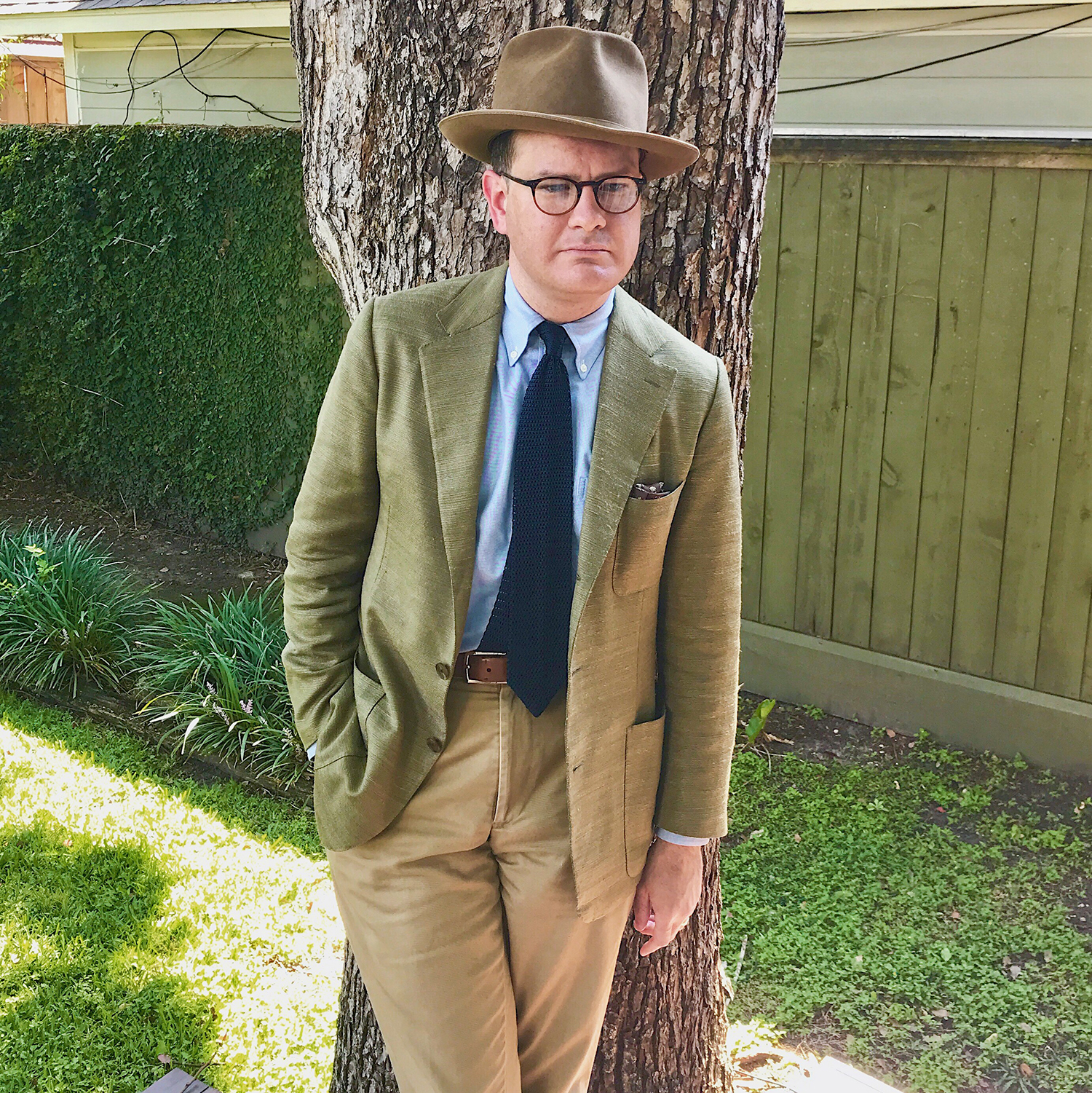
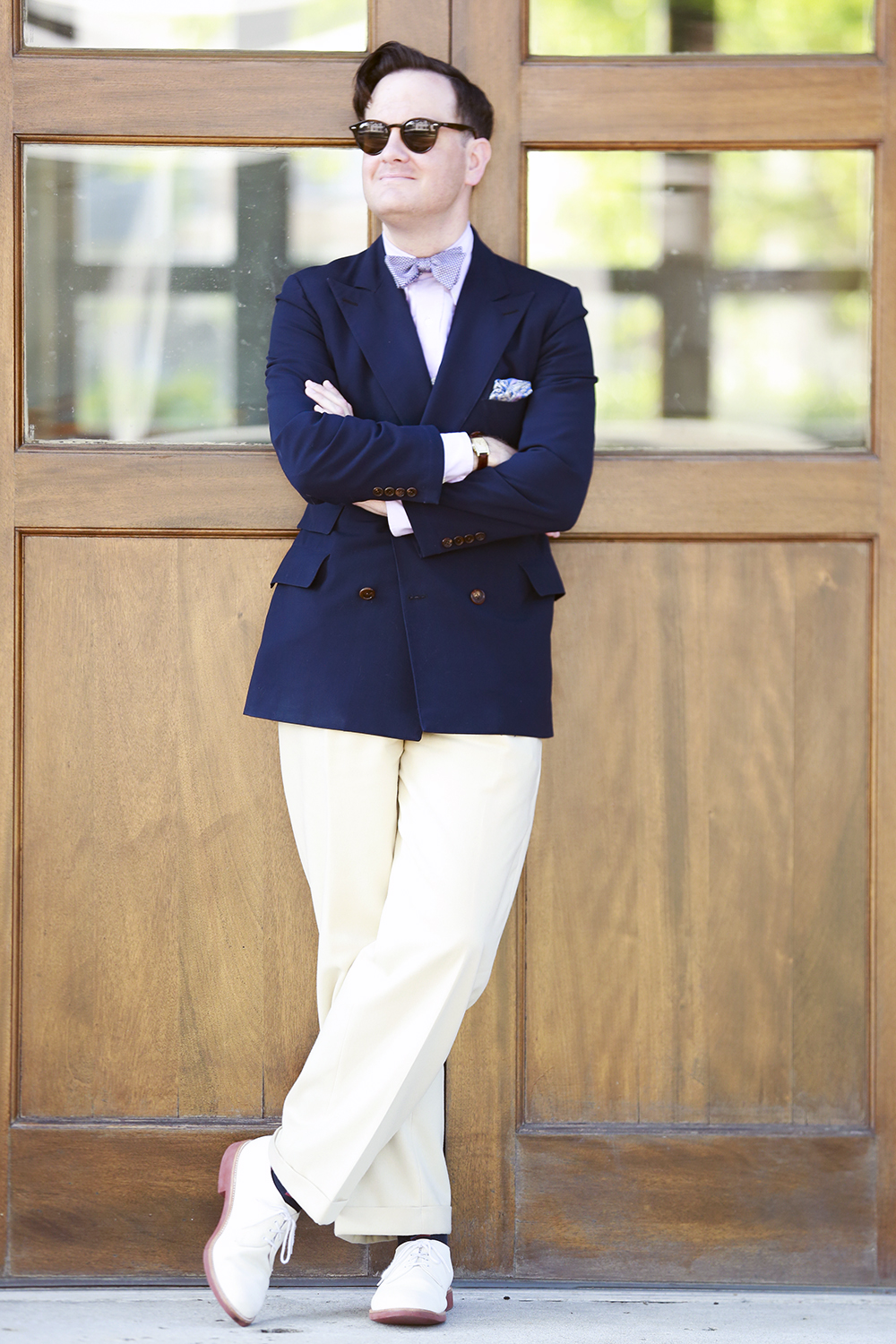
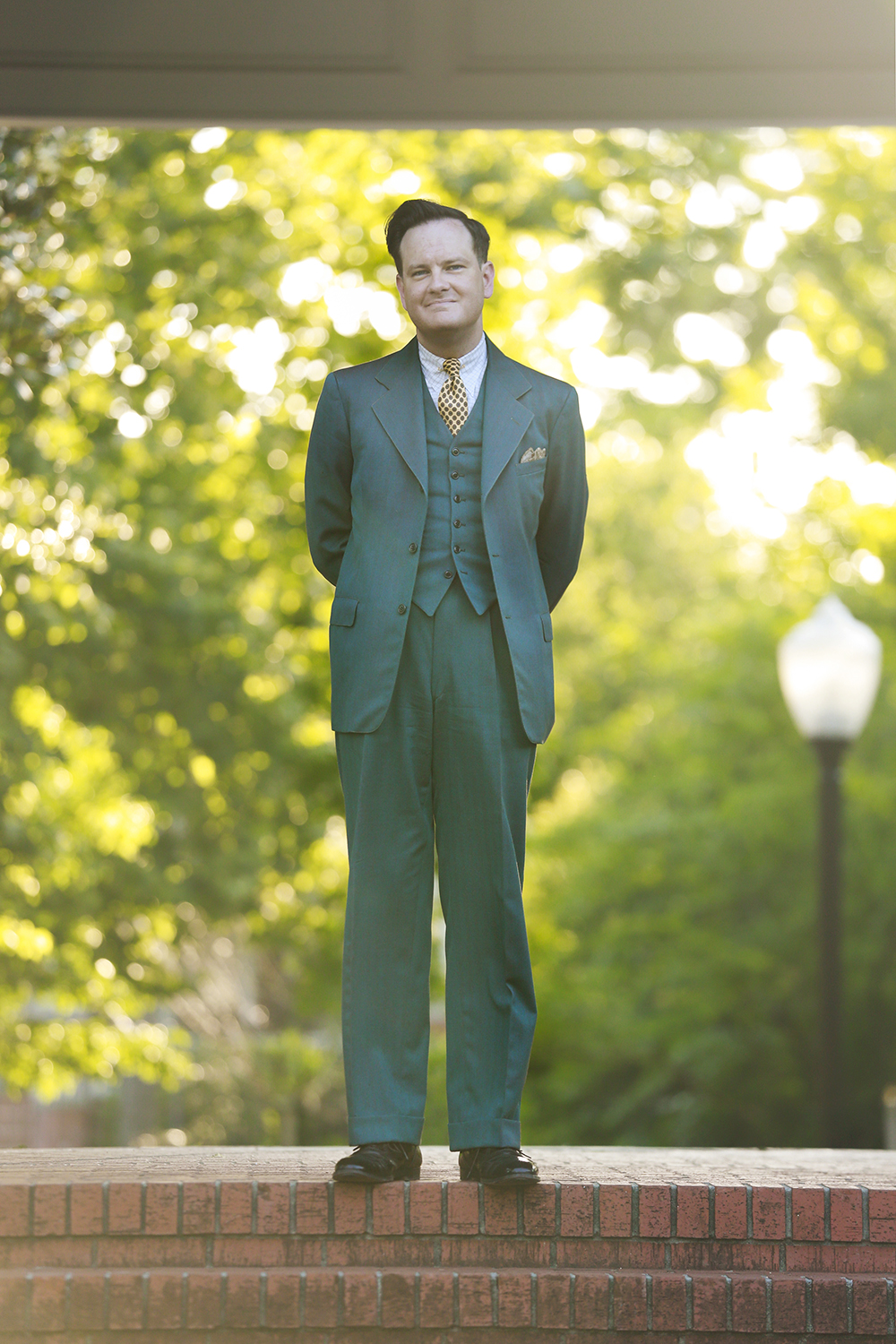
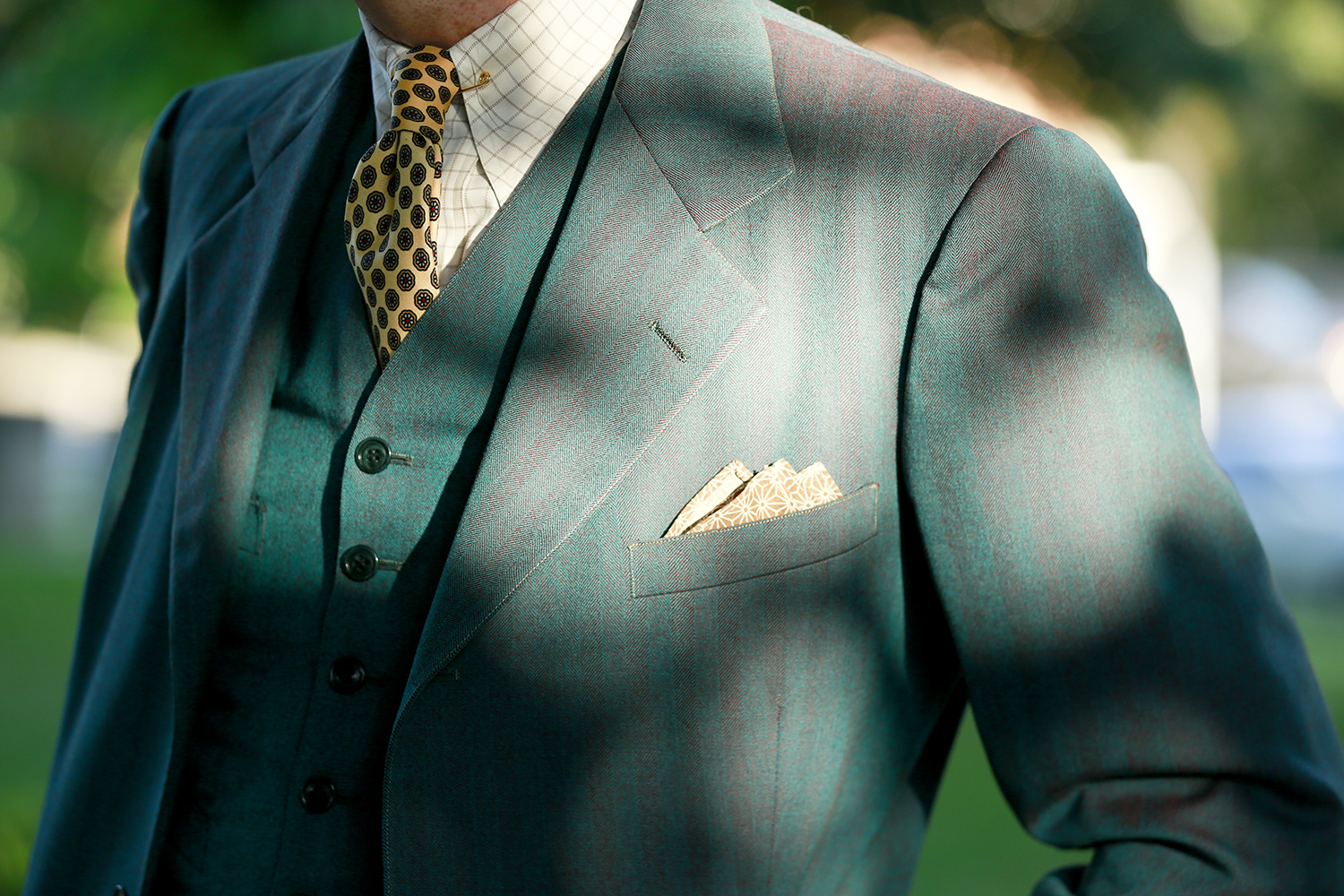


Leave a Reply